The Hungarian composer Béla Bartók was (reportedly) the opinion that, "in art there are only fast or slow developments. Essentially it is a matter of evolution, not revolution."
A position one, arguably, could apply to all expressions of contemporary culture and society.
And a position the exhibition SPACES. Interior design evolution at the ADAM Brussels Design Museum explores in context of domestic interiors.
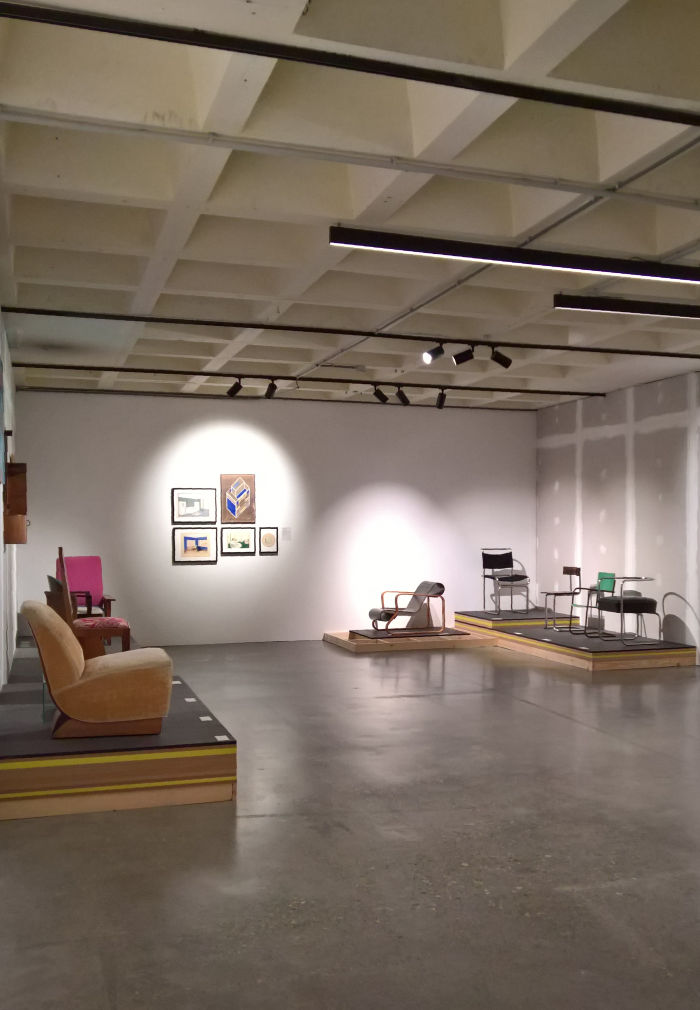
Arguably as long as humans have lived in shelters consideration has been given to the interior layout of those shelters: considerations of an initially rudimentary nature amongst the early nomadic peoples but which became increasingly complex as we became increasingly sedentary, and increasingly complex. And considerations which increasingly moved from the practicalities of living temporarily in a mobile space to decorative and aesthetic desires for our permanent, permanent, spaces.
And considerations which although, certainly in a European context, became increasingly active from the Renaissance onwards, were, arguably, and simplifying to point of inaccuracy, first formalised, professionalised, in the 19th century; for all as the movements towards what became Art Nouveau saw architects and artists become increasingly insistent that those objects with which we surround ourselves should not only be aesthetically pleasing, but appropriate for the age, should not just be decorative but functional, should unite the practical demands of the nomadic tribes with the aesthetic sensibilities of the industrial age. And an increasing insistence which saw the increasing prominence of the Gesamtkünstler: the architect who takes control of the interior as well as the exterior, and thus, the arrival of interior decoration as a verb.
And it is here that SPACES opens with considerations on the late 19th/early 20th century contributions of the likes of Alban Chambon, Gustave Serrurier-Bovy, Léon Sneyers or Josef Hoffmann whose Palais Stoclet in Brussels, leads, in a multitude of physical and literal, respects from the early decades of the professional interior decorator into the main body of the ADAM exhibition....... Space(s)
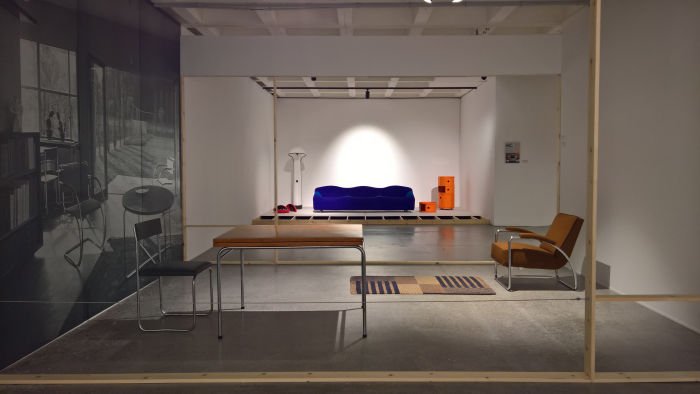
Following the familiar helix of architecture and design history from Art Nouveau through Art Deco, Modernism, Postmodernism, Pop, etc, etc, etc SPACES unfolds its narrative through a mix of film, photographs, catalogues, sketches and furniture objects; furniture objects which although technically only extras, background players in a wider scenography, do tend to steal the show. Among our numerous highlights are/were an elegantly civilised, low-down and dirty wing-backed lounge chair created by Jacques Dupuis for his 1951 Dumont House project; an undated hall storage/shelf unit by Maurice Gaspard which appears to do everything right without actually doing anything; a 1925 chair by Huib Hoste, a work which we're told was created for the house of an engineer, and which looks like it was, while also reminding us that the inter-War years could be very colourful; and a rarely seen precursor of Marcel Breuer's B5 chair which graphically illustrates what he wanted to achieve, and how much more elegantly he did so in the final B5. Then there is the singularly joyous 2004 Self Shelf system by Ronan and Erwan Bouroullec for Vitra.... remind us again Vitra, why isn't that in production?
While many of the objects on show have been borrowed from other institutions, including all those listed above, many are from ADAM's own collection, meaning that plastic objects abound, including many seldom seen plastic objects such as Verner Panton's Ilumesa lamp for Louis Poulsen, a work which takes the term "table lamp" a little too literally, but also defines the term more thoroughly and succinctly than a Dr Johnson could ever hope to achieve; a 1972 coffee table by Livia Castelli for Fain complete with space to elegantly hide your stash of gin, something all too rarely considered in contemporary coffee tables; and a completely anonymous, and absolutely delicious, playful, irrefutable late 60s/early 70s plastic dressing table/chair combination which not only reflects nicely on space saving as a functionality, but also very satisfyingly demonstrates the re-imaging of existing furniture ideas into new materials, if you will the evolution of ideas: the Poudreuse, toilet/dressing table with integrated seat being known since the 17th century. Albeit in exclusive ingrained mahogany, not democratic plastic.
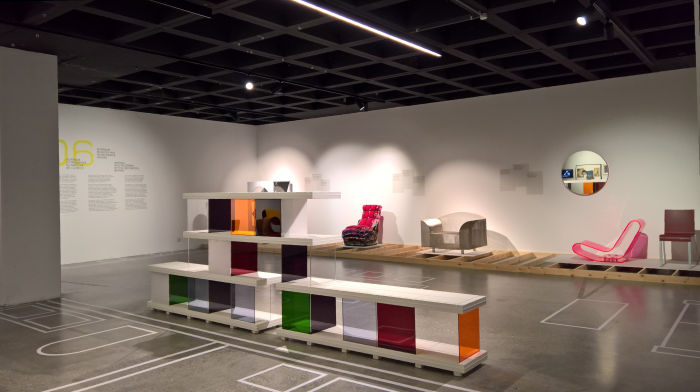
In addition to its principle narrative SPACES also takes a couple of structural, plot dependent, detours, including one along the evolutions of housing types since the 19th century and the close correlation between the physical space we live in and the demands that places upon our furniture, fixtures and fittings; one along how evolving technology, for all the rise of electric household goods, altered, and continues to alter, relations to domestic space; and one along how ideas of ideal interiors are mediated, a mediation which, as the exhibition explains, runs parallel to the rise of the interior decoration profession and which began with magazines and today is, arguably, dominated by social media.
Which are essentially the same. Both our contemporary social media and the magazines of yore (and today) relying predominately on positively captioned images, invariably involving improbably beautiful people in implausibly perfect interiors, and often realised with the tacit cooperation of a manufacturer. The principle differences being (a) the speed and pervasiveness of social media, it is everywhere all the time, and (b) whereas in magazines the pitch perfect photos are/were (normally) accompanied by a longer text which may have allowed for a degree of context, such are thoroughly superfluous in social media, who needs context when you have photoshop? And differences which pose interesting questions as to where social media's influence will take our interiors.
Whereby, if social media takes our interiors anywhere near the place where it has taken our politics, then we'd suggest we all start considering such questions with a degree of urgency.
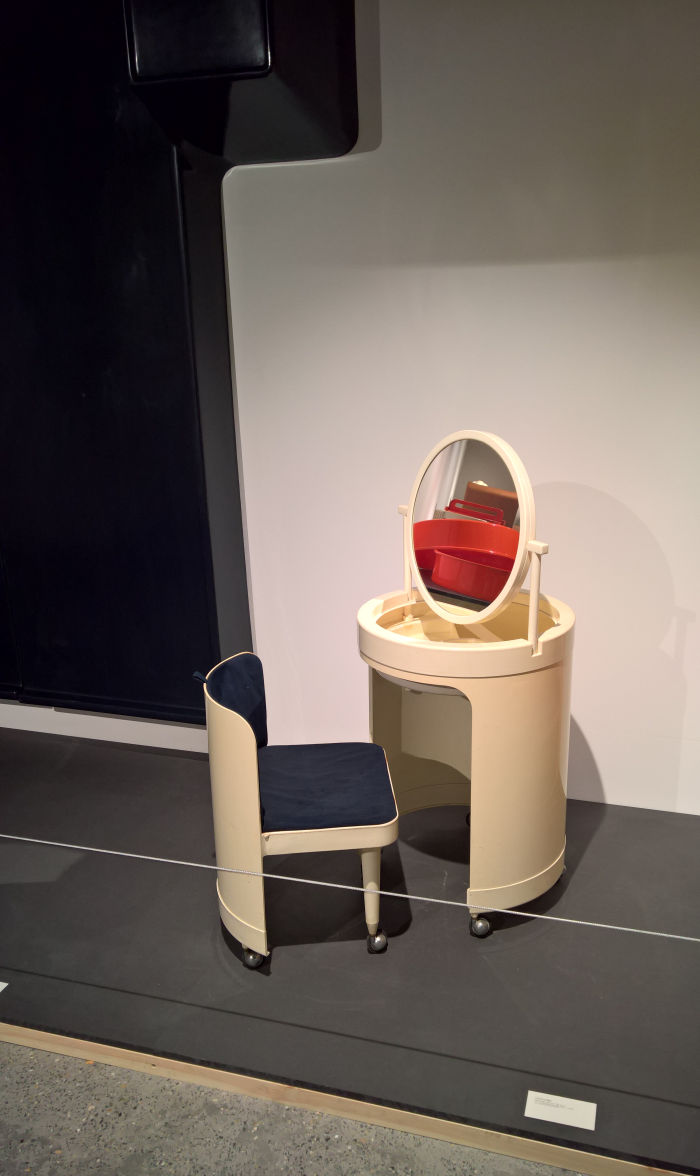
Discussions on interiors, as with discussions on (most) any social and cultural topic tend to involve an implicit understanding that all thought the developments and evolutions of any given age were good. That all responded positively. Certainly that is very much the tone of SPACES: here is where everyone was at. Yet while some were, many, many weren't. And didn't understand why they should be. One of the better examples being the steel tube and leather minimalism of the inter-War years: adored and advanced by some, rejected and derided by a majority. Which in no way takes away from the validity of such objects, or indeed any of the others on display, as reflections on and responses to evolutions in contemporary society; is however to understand the dynamics of furniture, furnishings and for all interior design: The designer and/or architect designs according to their social and cultural understandings, the consumer consumes according to theirs. And designers/architects, with the aid of intermediaries such as magazines, social media and retailers try to persuade consumers to adopt their understandings. Sometimes they succeed, sometimes they don't. Which is why properly understanding the (hi)story of furniture and interior design, requires understanding not only what was produced, promoted and proffered, but what was actually bought. Something, and returning to modernists, very neatly demonstrated by design historian Judy Attfield in her study of the reality of 1950s life in the English new town of Harlow, and for all in the furnishing choices made by residents for their new, modernist, homes, or as Attfield phrases it, "much to their consternation, architects found that their intentions for tenants' furnishings, in accordance with the rules of functional modern design, which disallowed traditional period styles or ornament, were totally ignored",1 residents instead furnishing their homes with more traditional, heavy, period, ornamented, disallowed objects. And that not just to the consternation of architects but disdain of design professionals, the UK Design Council's magazine noting in a 1957 article the "mistakes" the new Harloweans were making, including corners "cut off by diagonally placed wardrobes and sideboards", windows obscured by, amongst other monstrosities, "dressing table mirrors and large settees", and most offensively of all the authors noted, "there is a strong tendency to shelter behind net curtains."2
As Attfield points out not all the decisions were active, there were also unavoidable questions of availability and cost, but the tone, and one supported by other sources, tends to imply that people were largely consuming what they understood as home furnishings. Which wasn't what (some) architects and designers understood. Yet today the understandings of (those) architects and designers enjoy a preeminence in the popular consciousness: be that the functionalist modernists of the inter- and post-War years, the Popsters of the 1960s or the Gesamtkünstler of the late 19th/early 20th century. Which isn't to negate what SPACES presents, far from it, but is to understand that such an overview can, should, only ever be the start of a further investigation. Evolution is a complex undertaking.
Similarly SPACES through not questioning the validity of the various phases it discusses, tending as it does to unquestioningly accept them, challenges the visitor to do that questioning themself, to critically reflect with the benefit of hindsight on the developments, the evolution, presented. For all on the profusion of plastic presented. In the catalogue to the MoMa New York's 1972 exhibition Italy: The New Domestic Landscape Gaetano Pesce wrote in context of his installation, a future archaeological find of a 20th century European city, "only the stone objects have survived; and though the stone outer shells have come down to us more or less intact, all the structures in wood, ABS plastic, melamine, polyurethane, etc., have been irreparably lost or damaged by heat and humidity."3 Because, as we all know, that is exactly how plastics behave in the environment. And much like, for example, wood, leave no trace as they degrade.
Which isn't to say the post-War rise in the use of plastic in furniture, fixtures and fittings was wrong, that we shouldn't have done it, we most definitely should have, were most definitely correct to embrace the new and explore the possibilities thereby enabled, not least because as the Russian anarchist Peter Kropotkin teaches us, "...no evolution is accomplished in nature without revolution", something SPACES tends to underscore, plastics can be considered a genuine revolution; but is to say that evolution exists as much as a learning tool as a documentation, and that we should always question what previous generations did and try to learn, both directly and indirectly, from their experiences. Both then and in context of developing understandings since. And that not only for the sake of having a more probable, and thereby helpful, understanding of history, but because it helps us better question, consider and respond to the developments proposed in our contemporary society.
Or put another way, what contemporary claims will we look back on in 50 years and chuckle heartily at the naive fools of the early 21st century?
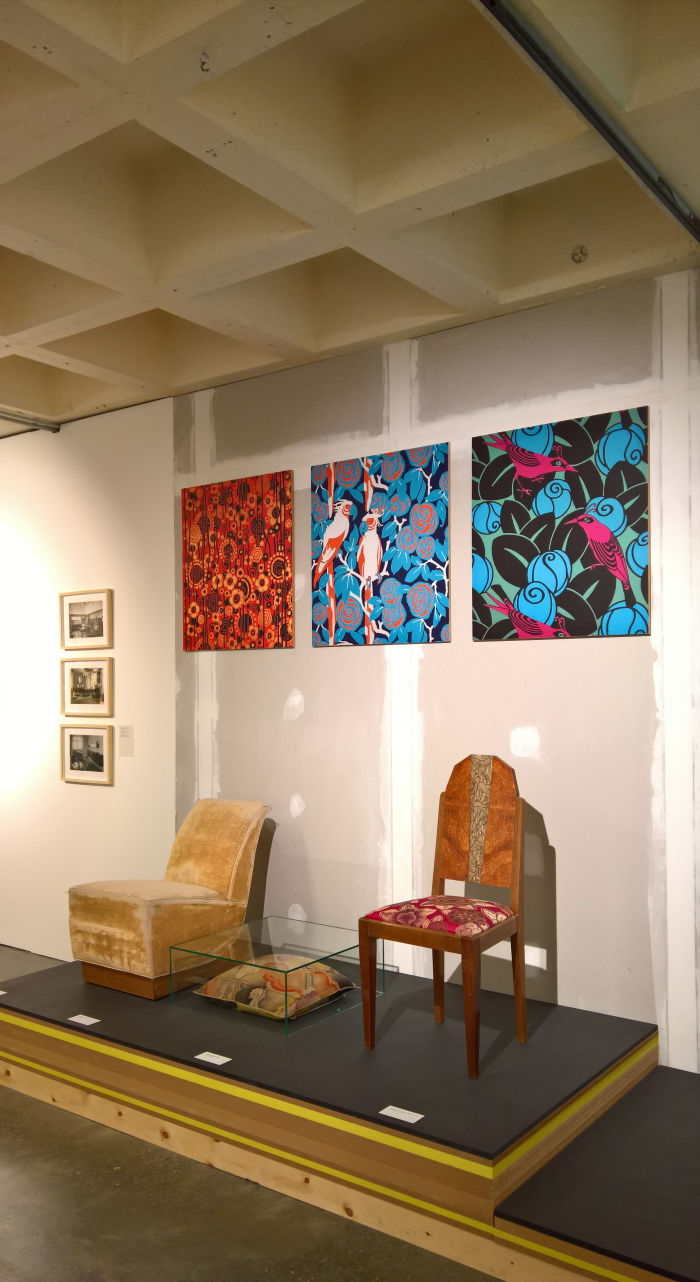
While the evolutions explored in the course of SPACES are universally applicable across Europe, the focus of the exhibition is very much on those developments in a Belgian context: which is exactly what one want from an exhibition in a Belgian design museum. And a focus which means that in addition to allowing spaces, sorry, for reflection on the evolution of interior design since the late 19th century, also allows for a very accessible and natural introduction to a whole raft of Belgian creatives with whom many visitors, Belgian or otherwise, may not be familiar, and thus helps extend our understanding of the (hi)story of (interior) design. While opening a few new doors on further study.
A well-paced exhibition whose "in progress" exhibition design adds an informality which aids and abets the viewing process, SPACES allows for an entertaining, informative and easily comprehensible introduction to and overview of the evolution in interior design understandings since the late 19th century, and in doing so neatly elucidates not only the relationships between past evolutions of furniture and interiors to past social, cultural, technological, economic and political evolutions, but allows space(s) for considerations on such future relationships.
And for all considerations on the speed at which they may evolve.
SPACES. Interior design evolution runs at ADAM Brussels Design Museum, Place de Belgique/Belgiëplein, 1020 Brussels until Sunday November 3rd.
1Judy Attfield, Inside Pram Town: A Case Study of Harlow House Interiors 1951-61 in Judy Attfield and Pat Kirkham, eds., A View from the Interior. Feminism, Women and Design, The Women's Press, London, 1989
2"Furnishing in the new town", Design, No 98, February 1957, quoted in Judy Attfield, Inside Pram Town: A Case Study of Harlow House Interiors 1951-61
3Gaetano Pesce in Emilio Ambasz Ed., Italy: the new domestic landscape achievements and problems of Italian design, Museum of Modern Art, New York, 1972
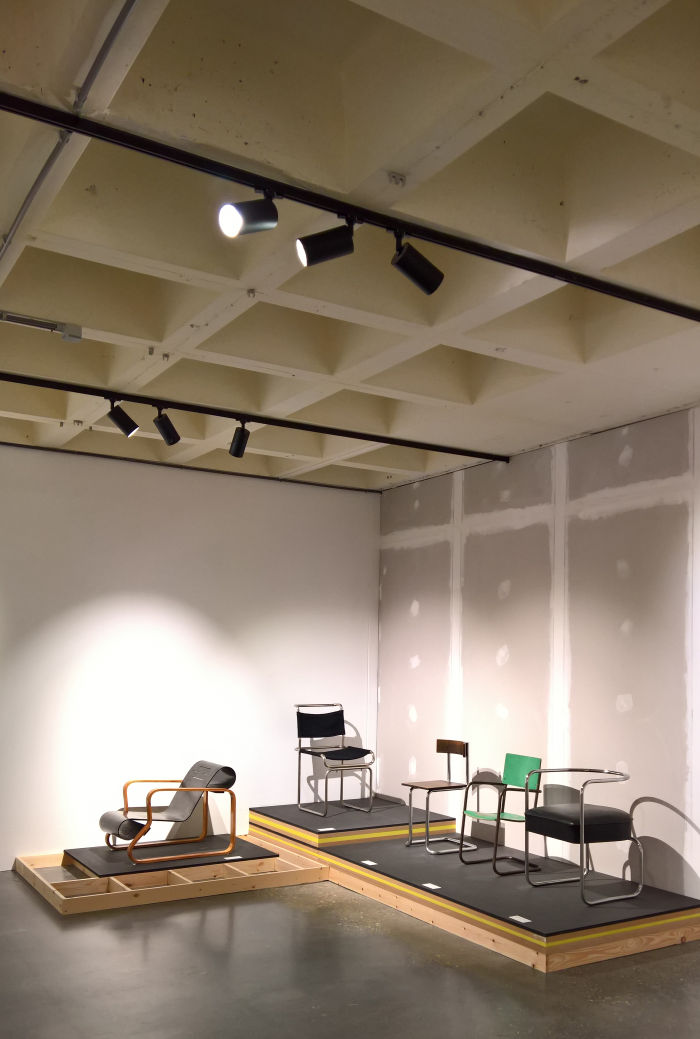
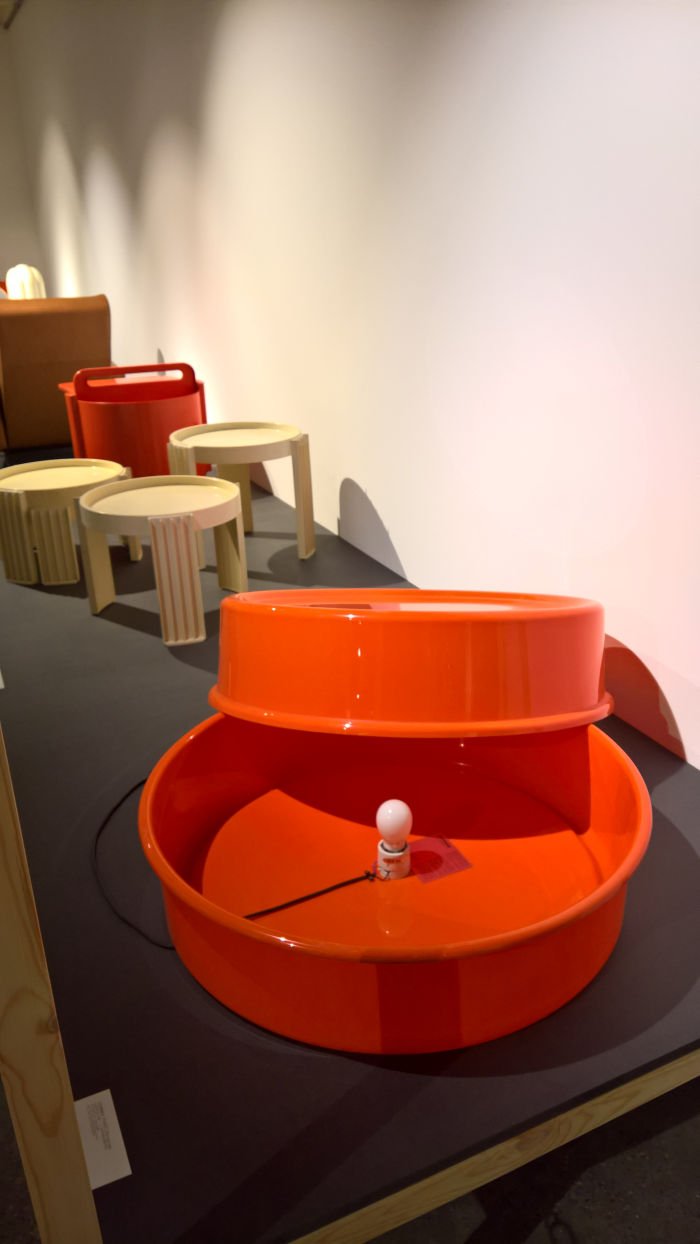
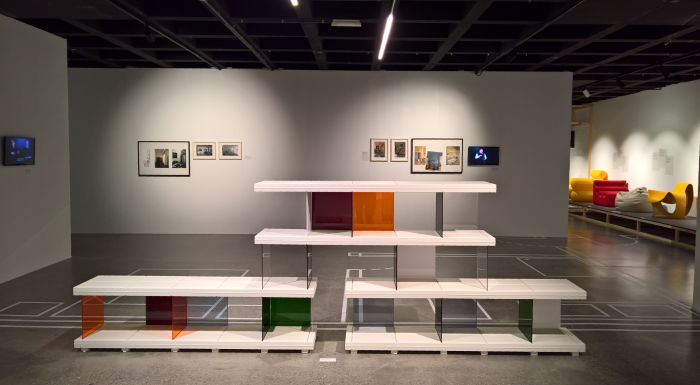
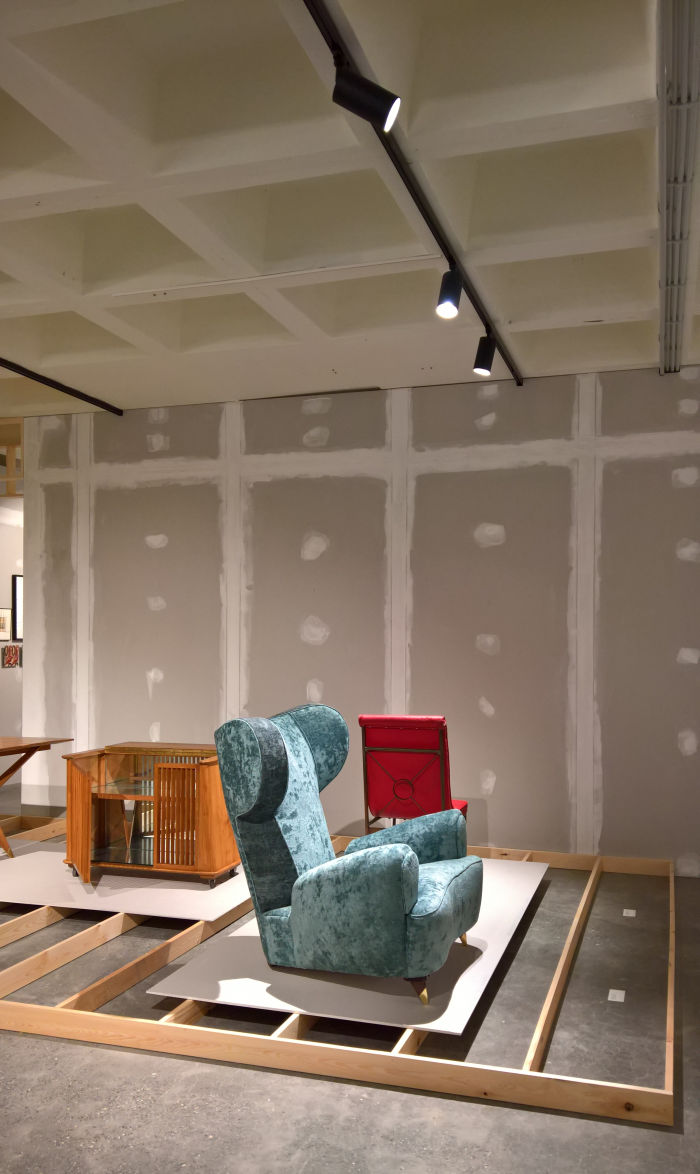
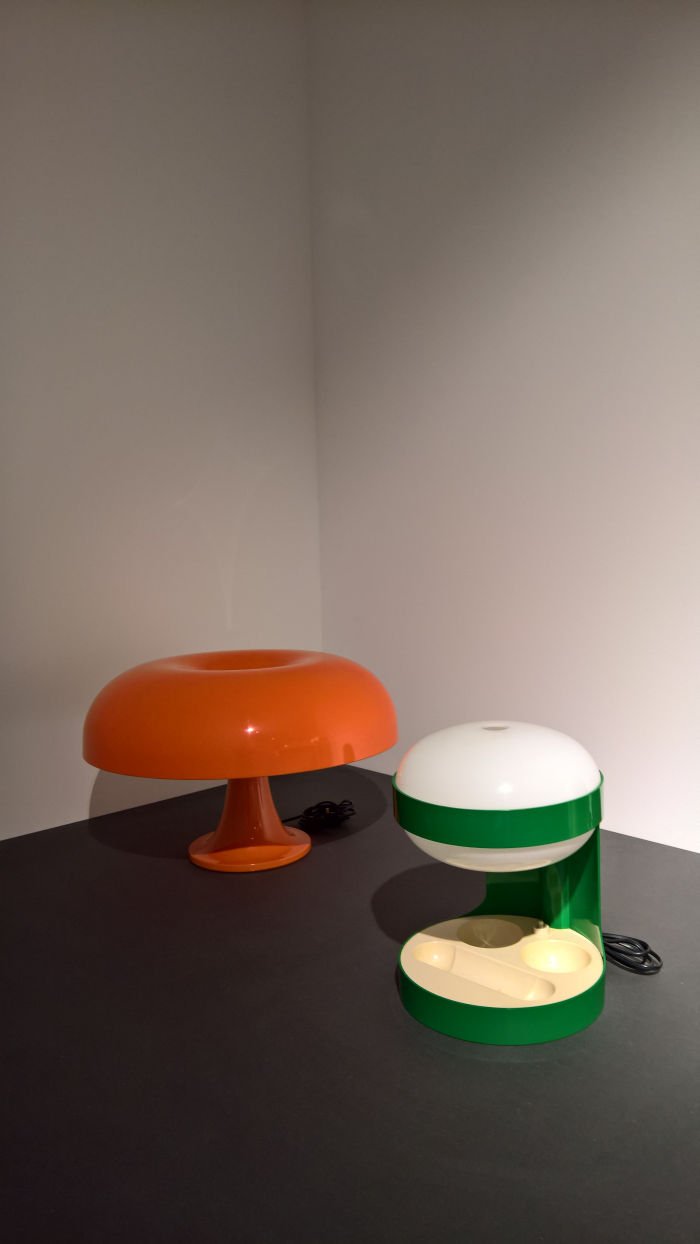
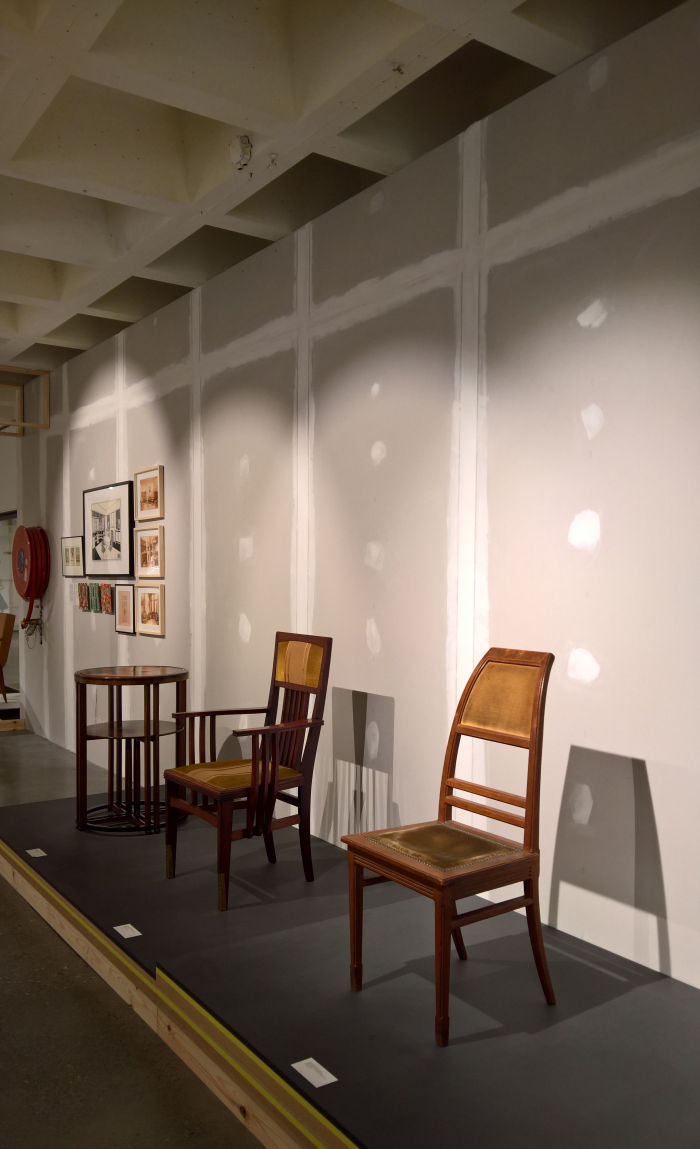
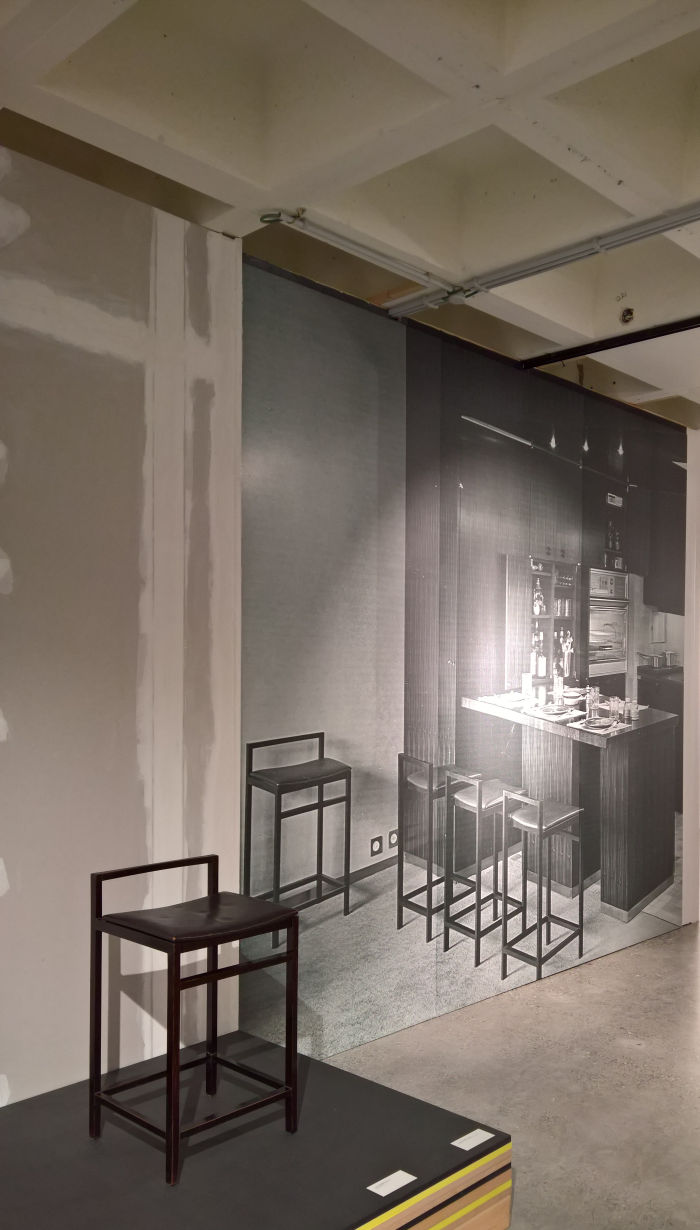
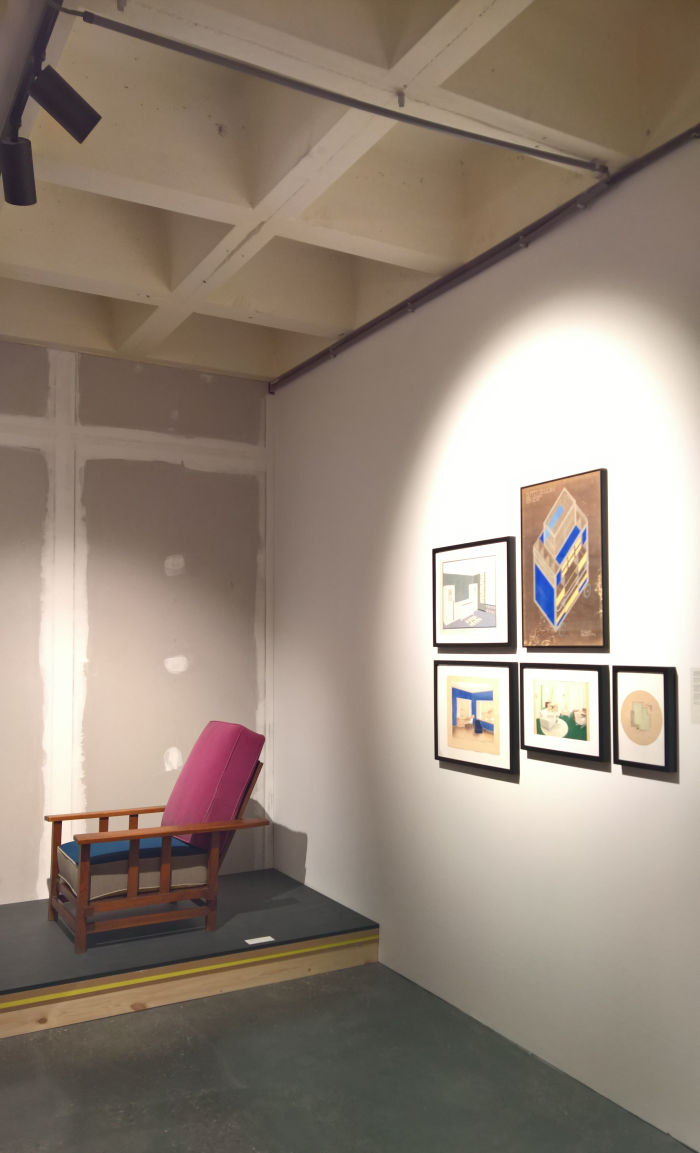
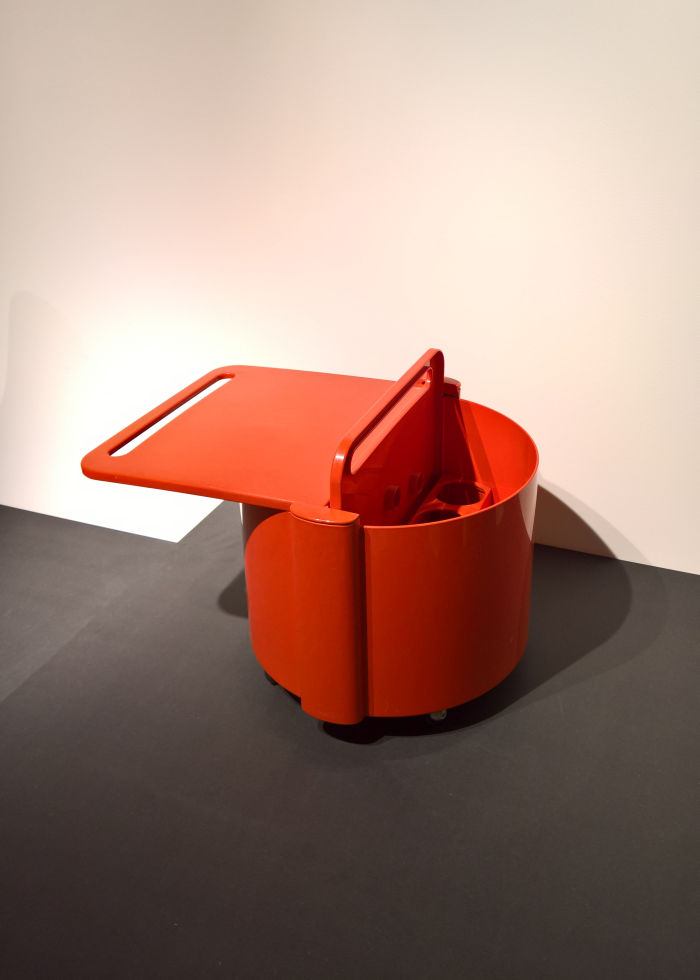
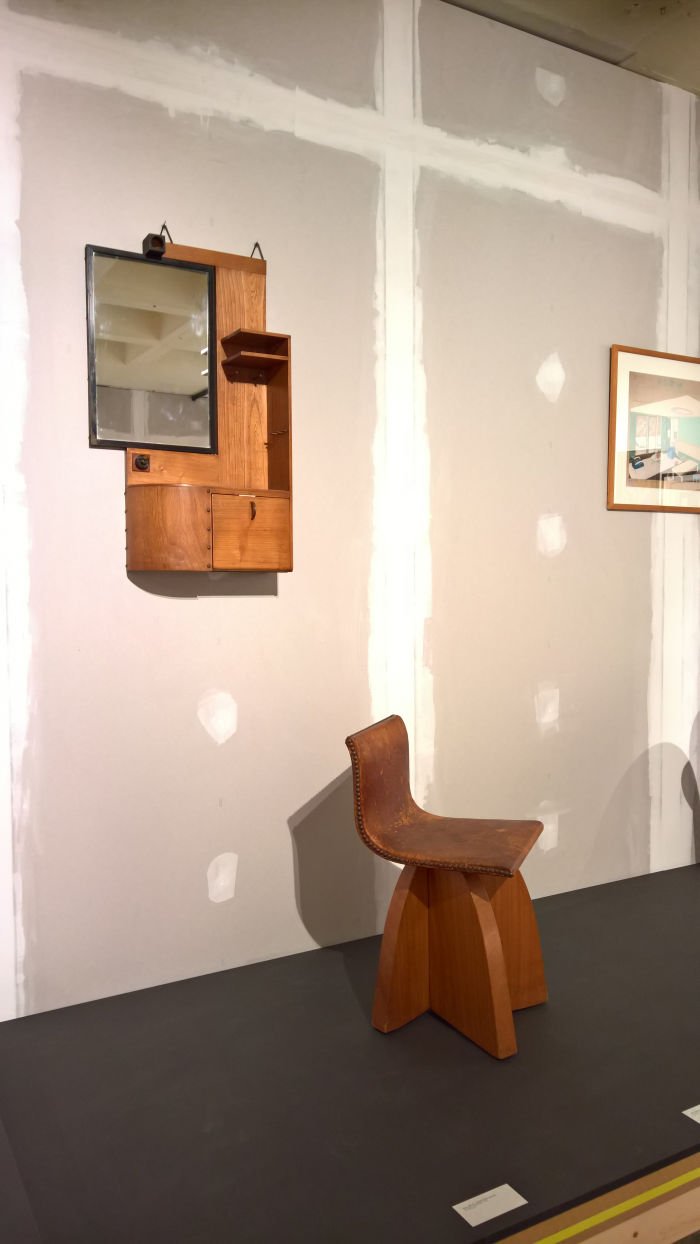
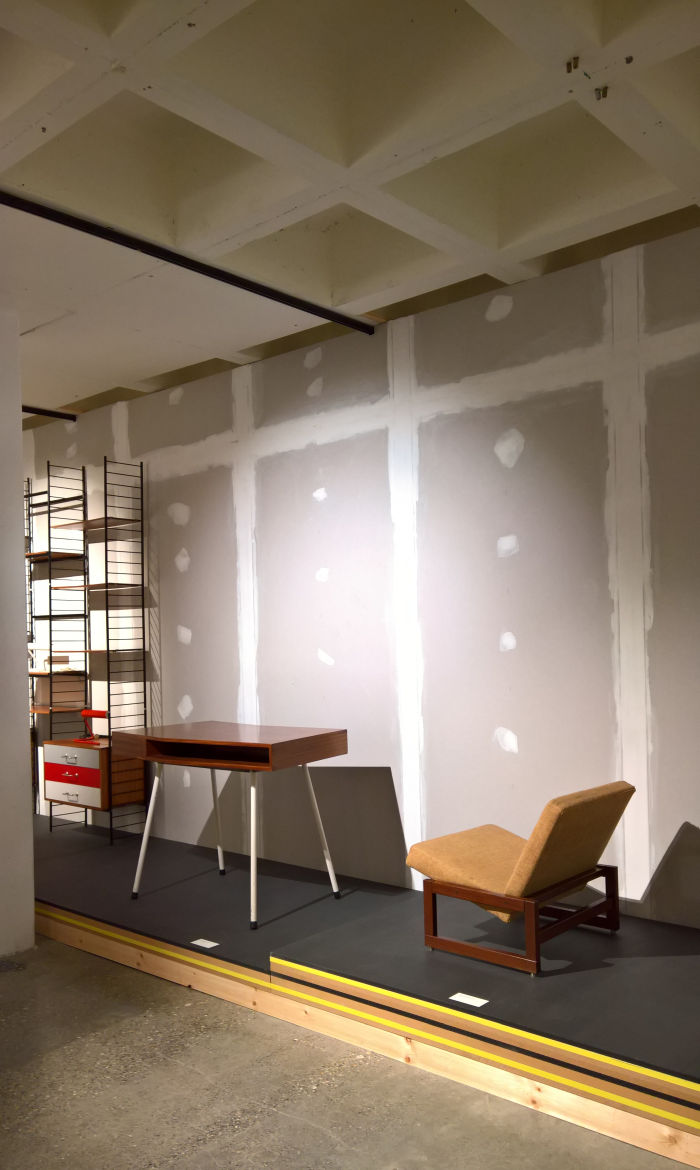
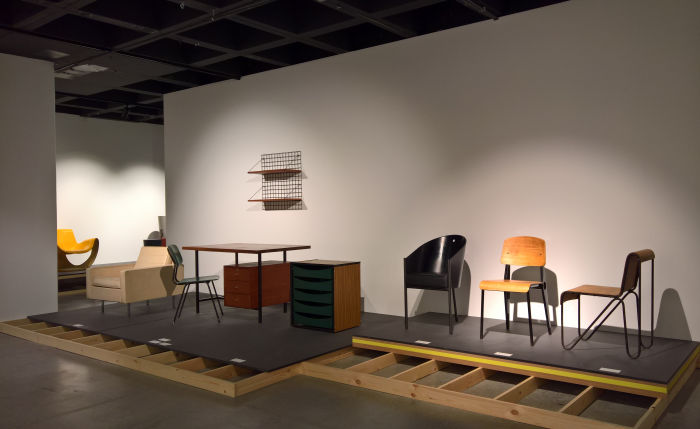
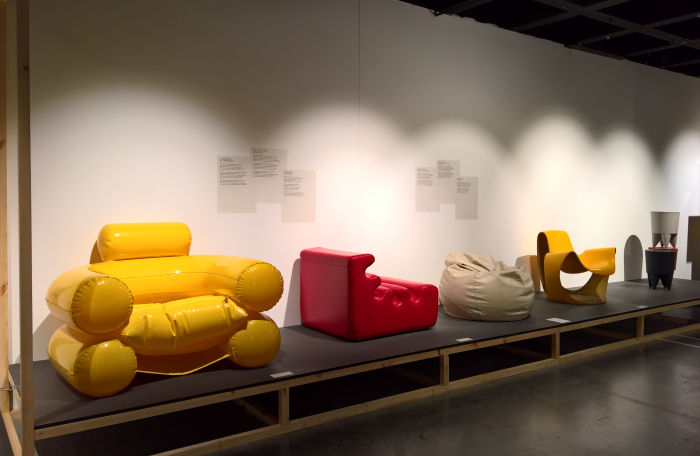
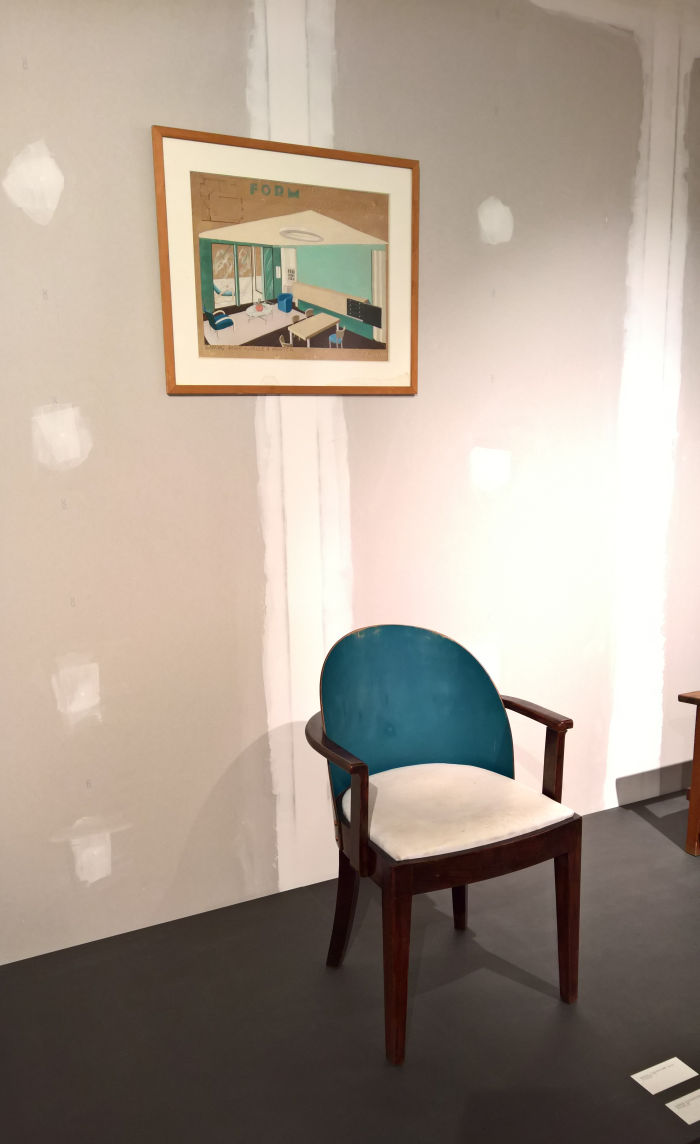
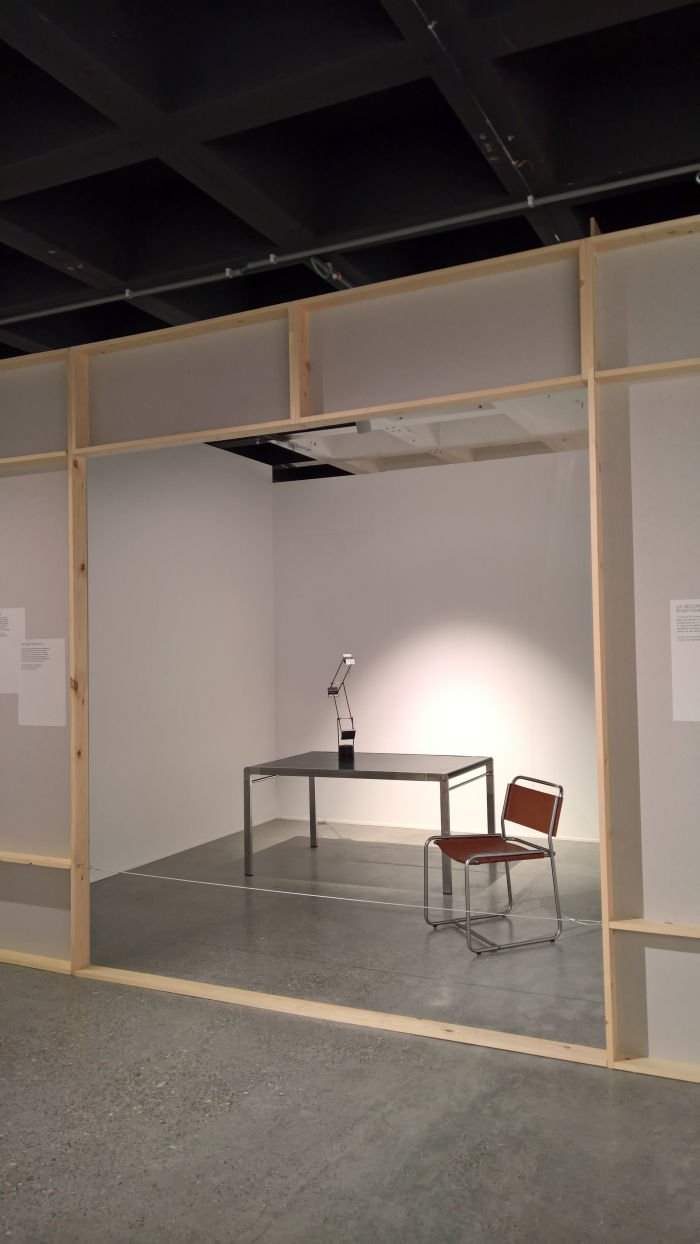
Full details can be found at http://adamuseum.be